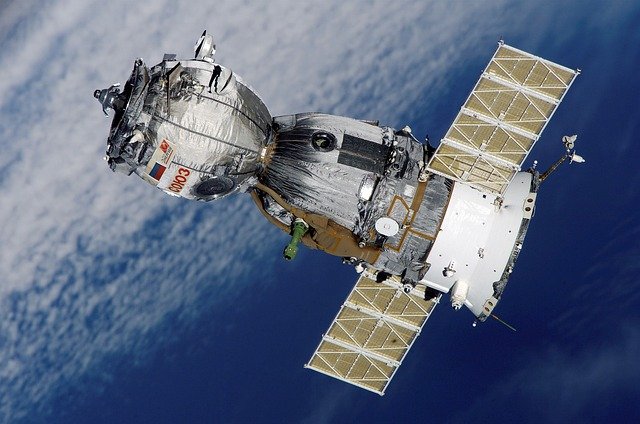What’s on the Horizon? Space Exploration Technologies

The advancements in space exploration technologies have made it feasible to explore anything. Space exploration technologies have advanced dramatically, taking humans further into space and deepening our grasp of the cosmos. From the early days of simple rockets to the modern, highly developed technologies, space exploration has continuously innovated.
Humans have always had a special desire to discover new places and increase their understanding of them. Humanity’s thirst for knowledge has led to an expansion of exploration beyond Earth. People are naturally interested, and while engineers strive to push the limits of existing technology, scientists are driven to produce new discoveries.
Humans can learn more about cosmic history and Earth’s location in the universe through space exploration. To explore the universe, professionals from a variety of fields collaborate and use space exploration technology. Anything that improves space exploration through a machine, gadget, or technology designed for that purpose is considered space exploration technology.
Space Technology Types:
The solar system is explored using a wide range of space technologies. They are employed in the study of solar system planets, moons, asteroids, and comets.
Take off
A fly-by passes past, that’s precisely what it does. This kind of spacecraft accomplishes this without being drawn into an object’s gravitational orbit by its gravity. Fly-bys are spacecraft that are fitted with extra instruments to gather data while they fly past planets or other things in orbit. A fly-by cannot return once it has passed its target. There’s only one chance for fly-bys to collect the data that scientists need.
The spacecraft Voyager 1 and Voyager 2 are two instances of fly-bys that most people are familiar with. When Voyager 1 was launched in 1977, it completed a flyby of Jupiter and Saturn, two gas giants. As of 2012, it has subsequently transcended the solar system’s limits. To collect data, Voyager 1 is outfitted with telescopes, spectrometers, imaging equipment, and other devices.
There is information concerning the human species on Voyager 1. This was carried out with the knowledge that the fly-by will eventually cross the solar system’s borders. Scientists are hopeful that they will be able to interpret the Golden Record if it is ever encountered by another type of life on Voyager.
The Moon is still prominent in the picture even if Mars receives a lot of attention. By the middle of the 2020s, NASA’s Artemis programme hopes to send back space explorers to the Moon, including the lead female and the guy behind her. In addition, preparations are underway to establish a viable lunar presence, with Artemis Headquarters serving as a conduit for further exploration of the neighbouring planet group. Not only will these projects advance lunar science, but they will also serve as a stepping stone for further future missions.
Room The tourism sector
For quite some time, space travel has only been in theory, but it is finally beginning to come true. Companies such as Virgin Cosmic and Blue Beginning are providing suborbital travel experiences to average people. These brief but fascinating trips into space are preparing us for a time when regular people will be able to experience the thrill of travelling through rooms. We may anticipate seeing more accessible and affordable options for travel in the near future as innovation progresses and expenses come down.
Elevated Drive Structures
The propulsion systems that facilitate space travel are also undergoing significant advancements. The concept of atomic warm drive is one exciting development that has the potential to significantly reduce travel times for deep space missions. NASA and other organisations are actively researching and testing these developments in order to expedite and improve interplanetary travel.
Mining for rocks in space
Future space missions have enormous potential thanks to the enormous resources of space rocks. Companies like Profound Space Enterprises and Planetary Assets are looking at the possibility of mining space rocks for valuable minerals, water, and other resources. Future space missions could not be powered by this, nor could it provide basic necessities for life in space, such as water and building materials.
worldwide cooperation
Countries have typically worked together to conduct space research. One excellent example of what can be achieved when countries work together in space is the International Space Station (ISS). In order to tackle complicated problems like in-depth space research and environmental observation, governments will likely combine their resources and expertise in a more global cooperative effort that will likely affect room investigation.
Computerised reasoning and mechanical technology
Space research is changing as a result of developments in sophisticated mechanics and artificial intelligence. Like the Mars meanderers, mechanical missions have provided invaluable knowledge about other celestial bodies. Rocket is being assisted by computer-based intelligence driven frameworks to autonomously investigate and pursue fundamental options. As these developments continue to progress, they will unquestionably play a crucial role in our exploration of space.
In summary
Without a question, room investigation has an exciting future ahead of it. Future prospects for humankind to expand beyond Earth seem endless, ranging from the possibility of settling on Mars to the rise of the travel business. We are getting close to the brink of another era in our quest to explore the universe thanks to international cooperation, advancements in technology, and the dedication of both public and private enterprises. When we turn our attention to the stars, we find it difficult to fathom the astounding discoveries and achievements that await us in that vast expanse of space.



